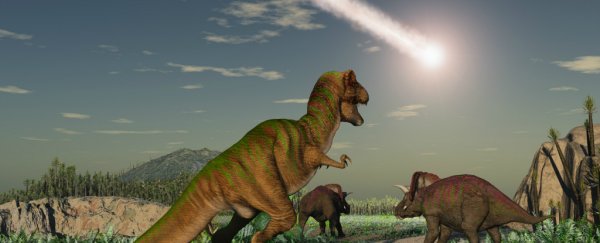Biologists have used conservative new estimates to prove that vertebrate species on Earth are disappearing faster than at any time since the extinction of the dinosaurs, and humans are now at risk of being wiped out.
"[The study] shows without any significant doubt that we are now entering the sixth great mass extinction event," one of the researchers, Paul Ehrlich from Stanford University in the US, said in a press release. Even worse, the research shows that we triggered the event ourselves.
Although many biologists have long believed that Earth is in the middle of a major extinction event, skeptics have argued that estimates were overstating how fast species were being wiped out as a result of inconsistent data.
Scientists work out whether we're in a major extinction event by comparing the current extinction rate to the background extinction rate - the rate at which you'd expect species to normally disappear.
By looking only at well-verified data and fossil records of vertebrates - our best-studied group of organisms - the new research came up with a background extinction rate that's twice as high as previous estimates.
But even using this background rate and the most conservative species loss estimates, the researchers found that animals are still being wiped out around 15 to 100 times faster than they should be - in fact, the rate of species loss hasn't been this high since the dinosaurs disappeared 65 million years ago.
"Rather than the nine extinctions among vertebrates that would be expected to have occurred in normal geological circumstances since 1900, their conservative estimate adds in another 468 extinctions, spread among mammals, birds, reptiles, amphibians and fish," Jan Zalasiewizc writes for The Guardian.
At this rate, the team estimates that around 41 percent of all amphibian species and 26 percent of all mammals will be wiped out.
Such dramatic biodiversity loss will also put humans in danger within just three generations, the team estimates, particularly if we also lose crucial pollinators such as the honeybee.
"If it is allowed to continue, life would take many millions of years to recover, and our species itself would likely disappear early on," said one of the lead researchers, Gerardo Ceballos from the Universidad Autónoma de México.
"We are sawing off the limb that we are sitting on," added Ehrlich.
The researchers also found that the main culprit for this mass extinction isn't a major event such as a volcanic eruptions or meteor strike. Instead, it's human activity. The researchers found the following four activities had been particularly damaging:
- Land clearing for farming, logging and settlement
- Introduction of invasive species
- Carbon emissions that drive climate change and ocean acidification
- Toxins that alter and poison ecosystems
"We emphasise that our calculations very likely underestimate the severity of the extinction crisis, because our aim was to place a realistic lower bound on humanity's impact on biodiversity," the researchers write in the journal Science Advances, where their results are published.
But it's not all bad news - the researchers remarked that we could still avoid such steep biodiversity loss through intense conservation action. "But that window of opportunity is rapidly closing," they conclude.
Hopefully the threat of wiping out our own species will be enough to finally make us sit up and take action. Find out more about the research in the Stanford University video below.

